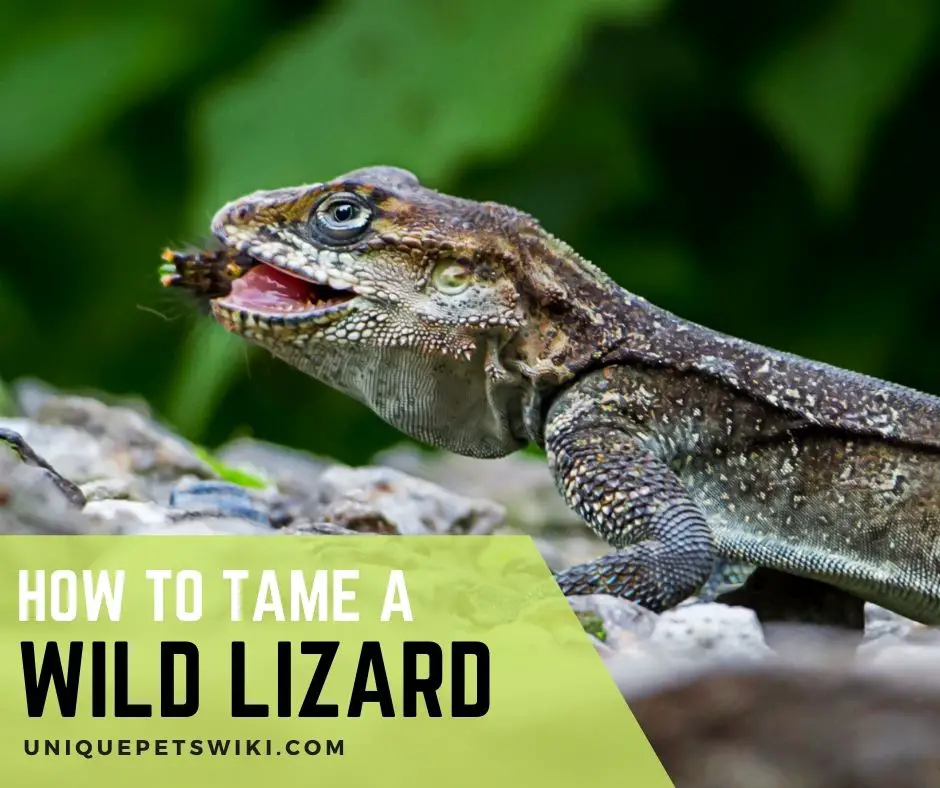Lizards are naturally not domesticated or tamed. This implies that they are wild creatures, whether or not they have been bred in captivity.
To make matters more complicated, certain lizard species appear to have a higher tendency for becoming tame, whilst others appear to be inherently more wary and even hostile.
Fret not for this article will guide you on how to tame a wild lizard.
Contents
Is A Wild Lizard Easy To Tame?
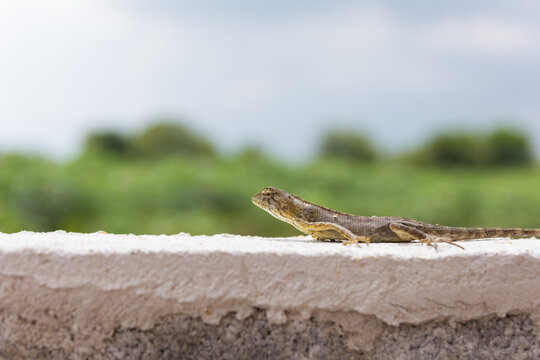
Yes, because lizards are interactive. So, with some proper handling, a little time and patience, you can eventually get to a point where you can be sought out, climbed on and fed from your hand by your pet.
Forced handling of your wild lizard is extremely harmful to the taming process and may make it much more difficult and time-consuming, if not impossible.
Your lizard will understandably be terrified, and it will show its anxiety in several ways such as biting, writhing, defecating, and even lying immobile.
Although taming a wild lizard can be challenging, remember that you just need to give your pet lizard some room.
Refraining from interacting with it for a time period has been the most effective way to tame it.
How To Tame A Wild Lizard
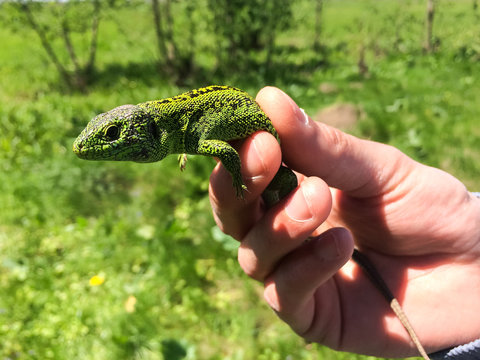
First and foremost, disregard everything you have ever heard about taming a lizard.
This includes dismissing well-intentioned reptile enthusiasts who claim that handling your lizard daily would eventually result in a tame reptile, while in fact, this is bad advice.
Continue reading when you have checked your assumptions at the door. The following steps will go against your instincts but believe that this strategy works.
Handling your lizard in a strong or assertive manner is not recommended. The use of force will simply inform your pet that you are a possible threat, leading to increased distrust and dread.
When handling or dealing with your pet wild lizard, there are a few things you must keep in mind:
Give Lizard Time And Space For Acclimatization
For a few days, let your wild lizard alone in its own space or enclosure. This will establish the feeling of safety and security for your pet towards its surroundings.
If it realizes that you are actively looking for it, it will merely hide even more.
For a while, you may leave your wild lizard to do its own thing. Eventually or sooner than expected, tension will be relieved which allows for the taming process to go on smoothly, especially for you.
Freeze Dried Crickets, 1.2oz
- Great alternative to live insects
- Great for reptiles, Tropical fish, birds, hedgehogs and sugar gliders
- Adds variety to diet
- Country Of Origin: United States
- Included Components: Fluker'S 1.2-Ounce Freeze Dried Crickets
Last update on 2022-12-29 / Affiliate links / Images from Amazon Product Advertising API
Using Utilize Food To Create A Bond With Your Lizard
After a few days, open the cage and show the lizard that you have put some food in. Allow the lizard to eat while you keep an eye on him. Repeat for a total of two weeks.
Begin the rewarding process by placing crickets, roaches, vegetables, and pinkies (depending on what your lizard’s diet should consist of) in the cage, making sure the lizard sees that you are not being aggressive.
If you keep up on doing this for a few weeks, you will notice that your pet lizard will most likely perk up whenever he gazes upon you.
Attempts to handle the lizard should still be avoided during this bonding time.
You may try serving food to your pet lizard with tongs. It is important to avoid making any unexpected movements to avoid your pet from feeling startled or threatened.
Remember not to force-feed if it is not yet ready to bond with you.
Also read: What do lizards eat? Can They Eat Anything?
Waiting Until The Lizard Try Climbing Up Your Arm
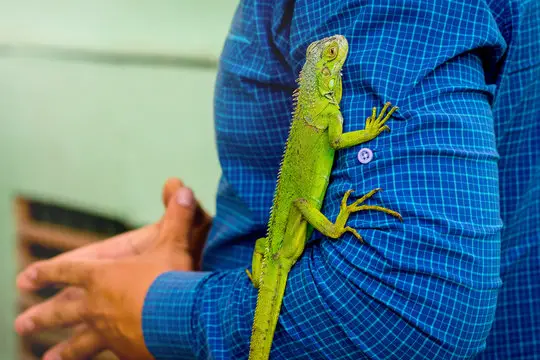
At this moment, it may be especially tempting to pick up the lizard—don’t. Instead, you can wait until your pet lizard is comfortable moving around more.
Eventually, you will find that it will crawl up your arm or rest on your hand when it does. It will investigate you, believe me.
Give it some time if it doesn’t happen right away. Because they are victims of so many things, lizards are warrier when they are young.
They tend to get easier to handle as they mature. As a result, the food relationship between you and your lizard will increase as well.
After a few days, you will probably find the lizard actively seeking you out after giving it time and space for acclimation and food. This is the phase where your pet is learning to view you as vital to its survival.
The best example of knowing it does is when your lizard tries to climb up your arm to investigate the non-aggressive being who delivers its food daily.
Bonus: 3 Tips To Tame A Wild Lizard
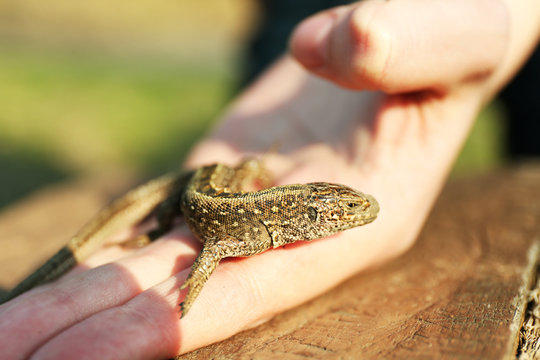
Here are still a few tips left to share in taming a wild lizard:
Starting With Hatchlings or Very Young Lizards
Begin caring for a hatchling lizard mainly because it is like starting from zero, literally. They are commonly described as blank slates. It is recommended to use captive-bred wild lizards.
If you want to tame a wild-caught lizard, you will have to go through the extra work of “de-programming” all of the things it was accustomed to and used to do.
For ease, it is more recommended to obtain a hatchling or a very young lizard.
When trying to tame a lizard, starting with hatchlings or very young lizards is a tremendous advantage.
This is because changing established behaviors and predispositions in an adult lizard may be quite difficult. It is not impossible, but it will take more effort.
Be Patient And Be More Patient
Lizards, like hawks and cats, are both predators and prey. They are extremely sensitive to eye contact and minute variations in muscle tone that might indicate an assault.
They like their independence, and with a whole lot of patience and goodwill, you may enjoy and interact with your pet wild lizard.
Lizards dislike being picked up, yet they will overlook the disadvantages in exchange for the much-needed warmth that their bodies are unable to manage.
They will despise it if they happen to be touched by a cold hand. Ultimately, you have to gather tantamount patience to deal with wild lizards.
Associating Your Scent With The Lizard’s Hide Spot
The one last technique to be shared in this article for lizard taming is to put on a clean and fresh pair of socks and wear them all day. After that, put both socks in the lizard’s hiding spot inside its enclosure.
Do this for a couple to four days, and you will be shocked how quickly the lizard begins to associate your scent with safety (ie. the hiding spot).
Zilla Reptile Food Munchies Mealworm, 3.75-Ounce
- Nutritious, dehydrated ingredients that can be fed with other diets or as a treat
- Quick and easy way to provide reptiles with high protein foods that they prefer
- No refrigeration required
- Ideal for bearded dragons, leopard geckos, chameleons as well as large tropical fish and birds
- For smaller sized animals, break Mealworms into pieces before feeding
Last update on 2022-12-29 / Affiliate links / Images from Amazon Product Advertising API
Wrapping Up
The trick is to let the wild lizard decide how much interaction it wants with you, rather than the other way around. Unfortunately, interaction takes place on its terms, not yours.
This, along with the absence of forced handling, creates an ideal setting for taming your wild lizard. Hope this material has been of help!
Also read: Lizards As Pets Pros And Cons
